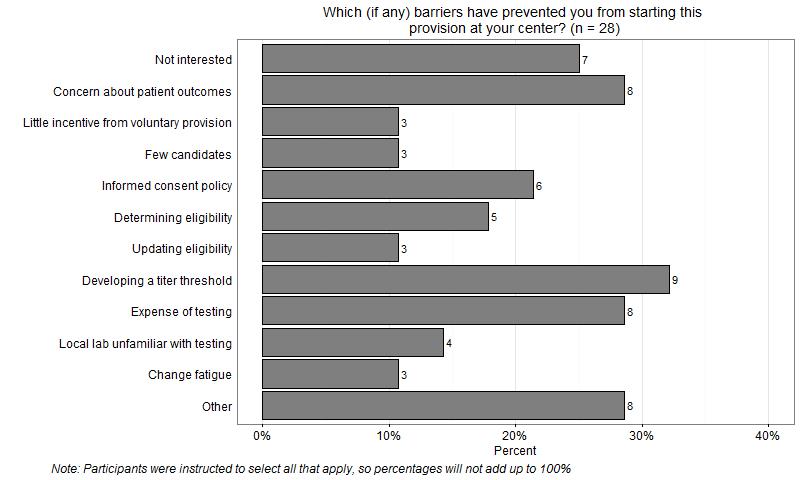Hurdles to Broader Implementation of the A2/A2BàB Deceased Donor Kidney Allocation Provision.
1Department of Surgery, Cedars-Sinai Medical Center, Los Angeles, CA
2United Network for Organ Sharing, Richmond, VA
3Department of Surgery, University of Massachusetts, Worcester, MA
4Department of Surgery, State University of New York, Syracuse, NY
5Department of Medicine, University of Nebraska Medical Center, Omaha, NE
Meeting: 2017 American Transplant Congress
Abstract number: D290
Keywords: Kidney transplantation
Session Information
Session Name: Poster Session D: Non-Organ Specific: Economics, Public Policy, Allocation, Ethics
Session Type: Poster Session
Date: Tuesday, May 2, 2017
Session Time: 6:00pm-7:00pm
 Presentation Time: 6:00pm-7:00pm
Presentation Time: 6:00pm-7:00pm
Location: Hall D1
Background: A2/A2B to blood group B kidney transplantation has improved transplant rates among disadvantaged blood group B patients with equivalent long-term graft outcomes. 18 months post-KAS, 82% transplant centers do not perform A2/A2BàB transplants (Figure 1). Methods: OPTN/UNOS Minority Affairs Committee (MAC) distributed a survey to all active US kidney transplant programs to identify best practices among participant centers and problems with implementation at non-participant centers. Results: 53 transplant centers (22.2%) responded with 24 (46.2%) participants in the A2/A2BàB provision. Common practices among participant centers included utilizing local hospital blood banks (58%) for isoagglutinin titer testing. Anti-A1 (43%), 1:8 acceptable titer cutoff for candidate eligibility (75%) was most common. Non-participant centers cited difficulty developing an A2/A2BàB protocol, including development of titer thresholds (32%) and an informed consent policy (21%) (Figure 2). A majority of non-participant centers (61%) stated that guidance for best practices would be helpful in A2/A2BàB participation. Conclusion: Underutilization of the A2/A2BàB provision under the new KAS remains with a sense that center protocol development is a major impediment to A2/A2BàB participation. Based on these findings, OPTN/UNOS MAC aims to provide best practice guidelines in an effort to increase A2/A2BàB center participation. 

CITATION INFORMATION: Kim I, Wilk A, Robinson A, Martins P, Whitaker V, Ward E, Miles C. Hurdles to Broader Implementation of the A2/A2BàB Deceased Donor Kidney Allocation Provision. Am J Transplant. 2017;17 (suppl 3).
To cite this abstract in AMA style:
Kim I, Wilk A, Robinson A, Martins P, Whitaker V, Ward E, Miles C. Hurdles to Broader Implementation of the A2/A2BàB Deceased Donor Kidney Allocation Provision. [abstract]. Am J Transplant. 2017; 17 (suppl 3). https://atcmeetingabstracts.com/abstract/hurdles-to-broader-implementation-of-the-a2a2bb-deceased-donor-kidney-allocation-provision/. Accessed December 14, 2025.« Back to 2017 American Transplant Congress
